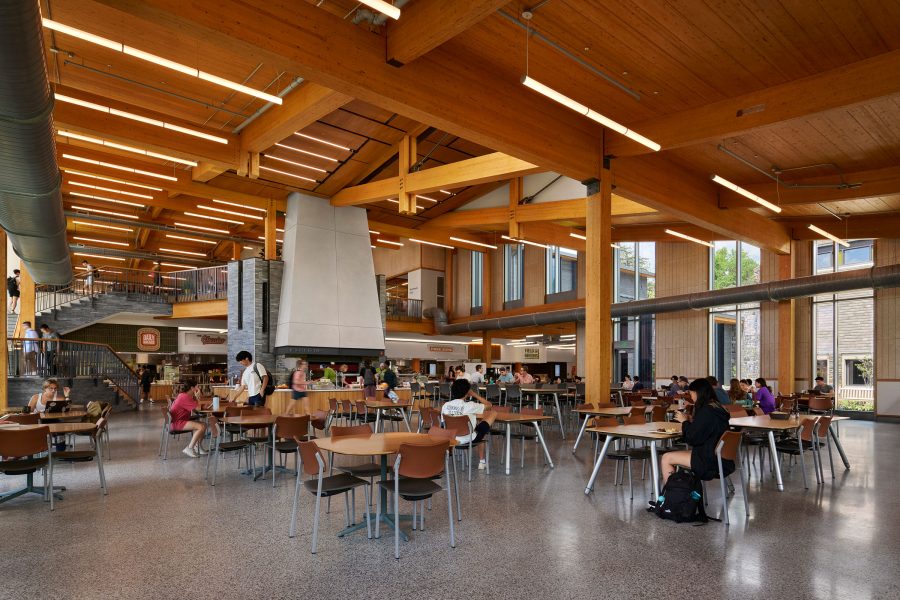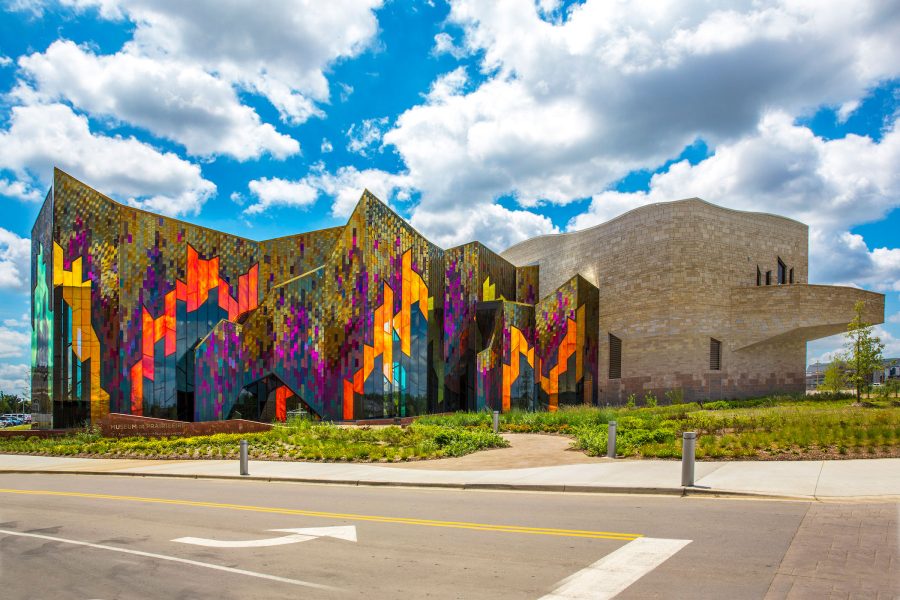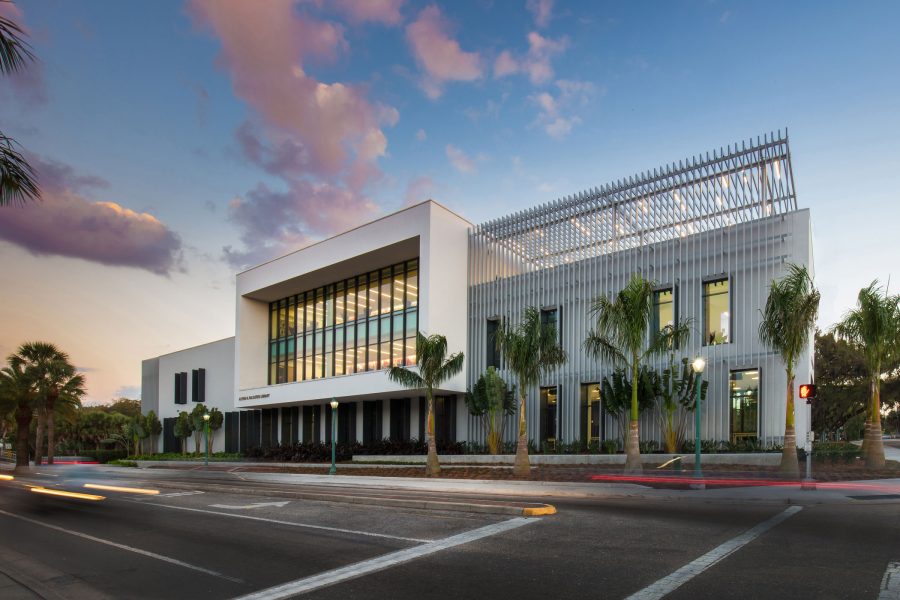Story at a glance:
- Architects and manufacturers are trading in clearer data and reporting practices.
- EPDs have become standard, though additional certifications are required for complete traceability.
- Collaboration is driving innovative solutions that address complex challenges.
Forget green promises—the building industry is entering the era of hard proof. Transparency is becoming the new currency of sustainable construction, with companies trading in verifiable data rather than vague testimonials.
Across the industry architects and builders are demanding complete environmental, social, and ethical clarity. Forward-thinking manufacturers are responding by digging deep into their supply chains and reconsidering their reporting practices to meet this major shift.
“Product-wise it’s becoming the norm,” says Sneh Kumar, director of global sustainability and ESG at Kawneer, a global manufacturer of architectural aluminum facade solutions. “Sustainability-focused architects, general contractors, and developers are taking transparency about products and their manufacturers into account as they form strategic partnerships and prioritize products to meet their goals.”
Companies embracing transparency are positioning themselves to be the type of preferred partners Kumar describes, while those still relying on general sustainability statements without supporting data risk getting left behind.
Why Transparency Matters

Kawneer 190 Standard Entrances were used at the Lewis Katz Building, designed by Ennead Architects. Photo by CJ Berg, courtesy of Kawneer
Green building has long relied on voluntary sustainability disclosures, but exaggerated claims and cherry-picked data have eroded trust, creating a credibility gap that more rigorous transparency now hopes to fill.
This growing demand comes from multiple directions—clients and regulators scrutinizing environmental claims more closely, while increasing public environmental awareness holds all sectors to greater account.
At the core of sustainable material selection is the Environmental Product Declaration (EPD), detailing a product’s environmental impact across its life cycle. Because EPDs are standardized and because they integrate with popular green certifications like LEED, architects rely on them to ensure alignment with project goals and to make apples-to-apples material comparisons. “EPDs and Declare labels have become the norm—a standard part of every project is collecting all that information,” Kumar says.
We are looking at the entire value chain because it’s a matter of brand reputation, demonstrating that we are the company we say we are.
However, full traceability often requires supplemental measures beyond EPDs. Kumar says Kawneer is pursuing more intensive and holistic certifications like Cradle to Cradle and undergoing deep supply chain due diligence with EcoVadis, which assesses suppliers across a number of factors, including environmental impacts, carbon emissions, resource consumption, labor conditions, and ethical business practices.
“We are looking at the entire value chain because it’s a matter of brand reputation, demonstrating that we are the company we say we are,” he says.
Spheres of Influence

DLR Group’s work with Swarthmore College in Pennsylvania illustrates how a broad look at transparency can drive institutional change. Photo by Brad Nicol, courtesy of DLR Group
Transparency initiatives also serve as a way to move suppliers along the sustainability path. Kawneer has set an ambitious goal of ensuring that by 2030 80% of its material purchases come from suppliers that have undergone the same EcoVadis assessments—effectively driving change through their supply chain.
Working up the chain, Kawneer supports greater rigor for its clients as well, providing full traceability for its aluminum billet, including verified recycled content, to help meet green building certification benchmarks. In addition, Kawneer (through its parent company Arconic) is publishing annual sustainability reports per international standards to share its environment impact and progress toward its goals.
These broader endeavors are the kind of efforts finding a welcome reception among many architects, who are increasingly expanding how they view and choose their partners.
“We look at the traditional reports—the EPDs, HPDs, and whether they have a carbon-neutral product or not, but we also look at things holistically,” says Prem Sundharam, chief climate officer of global integrated design firm DLR Group. “For instance, you may have EPDs on a product, but it may not be the most durable material for the conditions we’re building in. So we bring a bigger perspective to the equation.”
This holistic approach can lead to transformative outcomes. For instance, DLR Group’s work with Swarthmore College in Pennsylvania illustrates how a broad look at transparency can drive institutional change.
Though renowned for its own sustainability framework, Swarthmore identified gaps in its approach after a clarifying DLR Group exercise, leading the school to change direction and pursue the Living Building Challenge—widely considered the most rigorous certification. “Since then they changed their basic expectations to Living Building for every project they plan to do,” Sundharam says. “We were able to influence and change their trajectory—not just for our project, but all projects.”
Challenges in Transparency

The Museum at Prairiefire is a museum in Overland Park, Kansas. Photo by Bob Perzel, courtesy of Kawneer
Achieving full transparency isn’t easy. One of the biggest challenges is gathering consistent, verifiable data across complex supply chains.
Kumar notes that as Kawneer works to assess suppliers through EcoVadis, they often encounter data gaps. “Everyone is at a different stage of their sustainability journey,” he says. “Information gathering across the entire value chain is not easy.”
Architects face similar struggles with outdated or incomplete EPDs or their material health counterparts, Health Product Declarations (HPDs). “One of the challenges is that manufacturers sometimes don’t update their EPD and HPD data,” says Sundharam, adding the firm has high expectations. “We use the AIA Materials Pledge as a framework for looking at materials across multiple dimensions. And we ask our manufacturers and product representatives how they can help with all of these aspects, not just one or two.”
Our designs have an impact on every one of these things.
This collaborative approach has led to continued innovation. Sundharam says the firm has worked with manufacturers to design custom products that meet specific sustainability goals. “We designed panels for a tech-company client who helped achieve our materials pledge framework, while creating a unique product the manufacturer didn’t previously offer,” he says.
Adding to the complexity, sustainability reporting is fragmented across multiple reporting tools—from EPDs to material health tools like Declare Labels or the more intensive HPDs. While valuable, navigating different formats and requirements can be overwhelming.
As the definition of sustainability expands beyond carbon emissions to include issues like biodiversity, labor rights, and circularity, the industry must continue to adapt. “Although we get paid to do things on the building scale, we also look at the people scale, the neighborhood scale, the regional scale, and then the global scale, because everything is a sphere of influence,” Sundharam says. “Our designs have an impact on every one of these things.”
How far should architects push their degree of influence? “That becomes the challenge in every project,” he says.
Path Forward

The Alfred R. Goldstein Library in Sarasota includes Kawneer curtain wall systems. Photo courtesy of Kawneer
Progress is being made. The industry is actively working on solutions to all these challenges.
Some firms, for example, recognize that sustainability requires interdisciplinary knowledge. DLR Group has developed its own curriculum and has committed to achieving 100% carbon literacy for its staff by 2027—ensuring all teams, regardless of role, have basic knowledge about carbon and climate and how it impacts the built environment.
Collaboration between manufacturers and architects is beginning to drive industry-wide transformation. From co-developing lower-carbon materials to enhancing documentation transparency to company disclosures, these partnerships create practical solutions to complex problems. “That’s a key part of our product innovation roadmap,” Kumar says.
Through these combined efforts, the green building industry is moving beyond fragmented data and inconsistent claims toward a future where transparency forms the foundation of trust and progress in sustainable construction.

